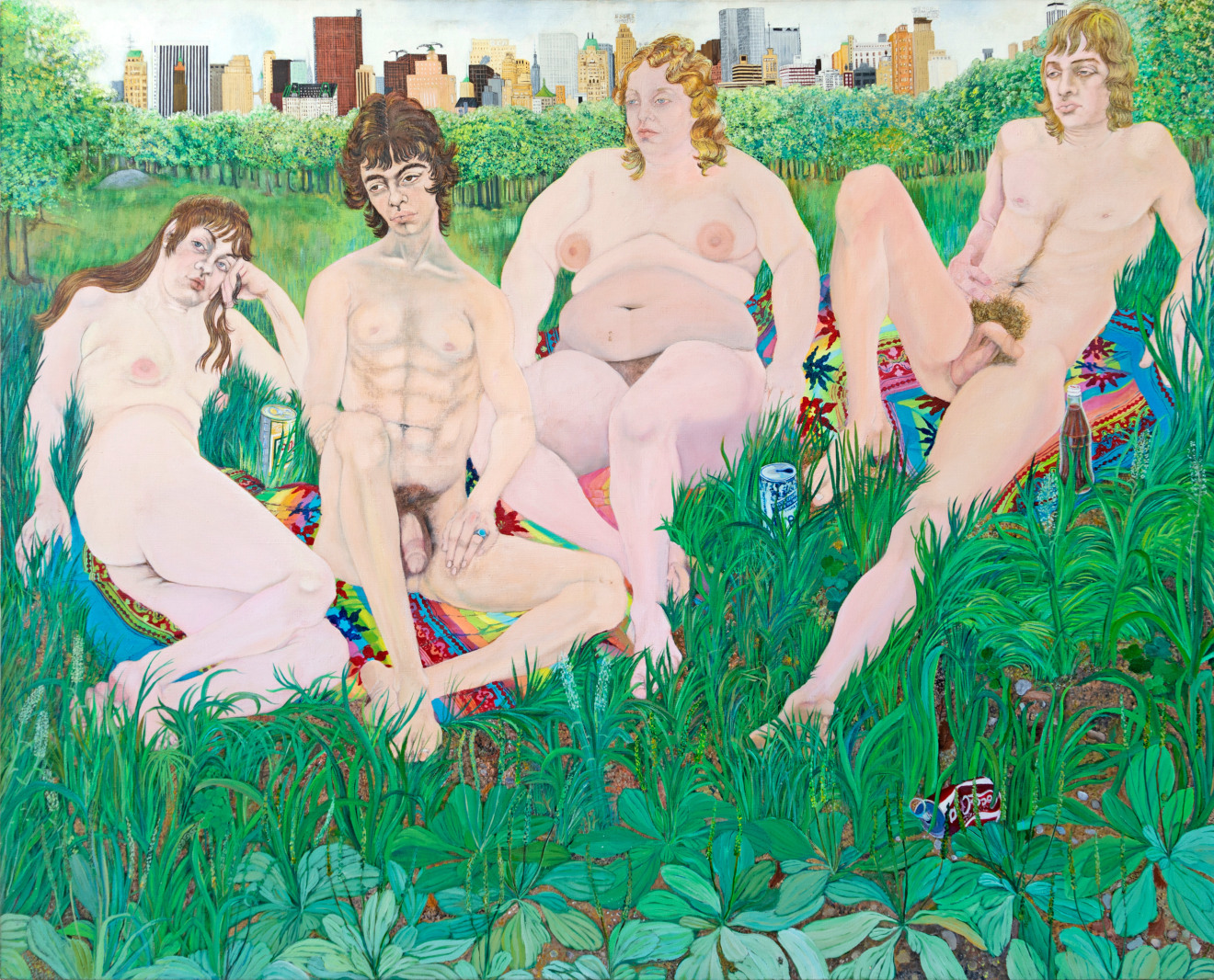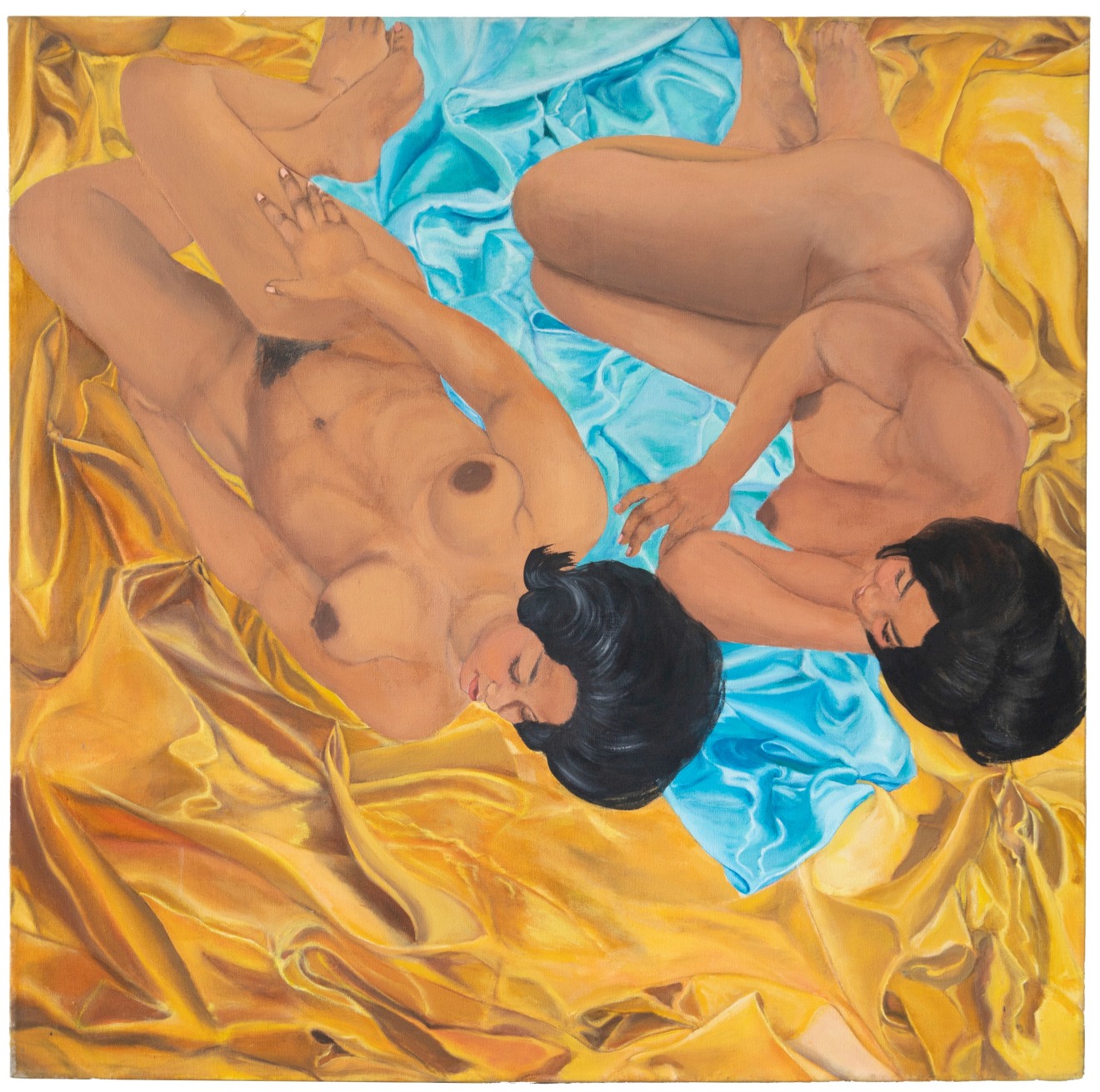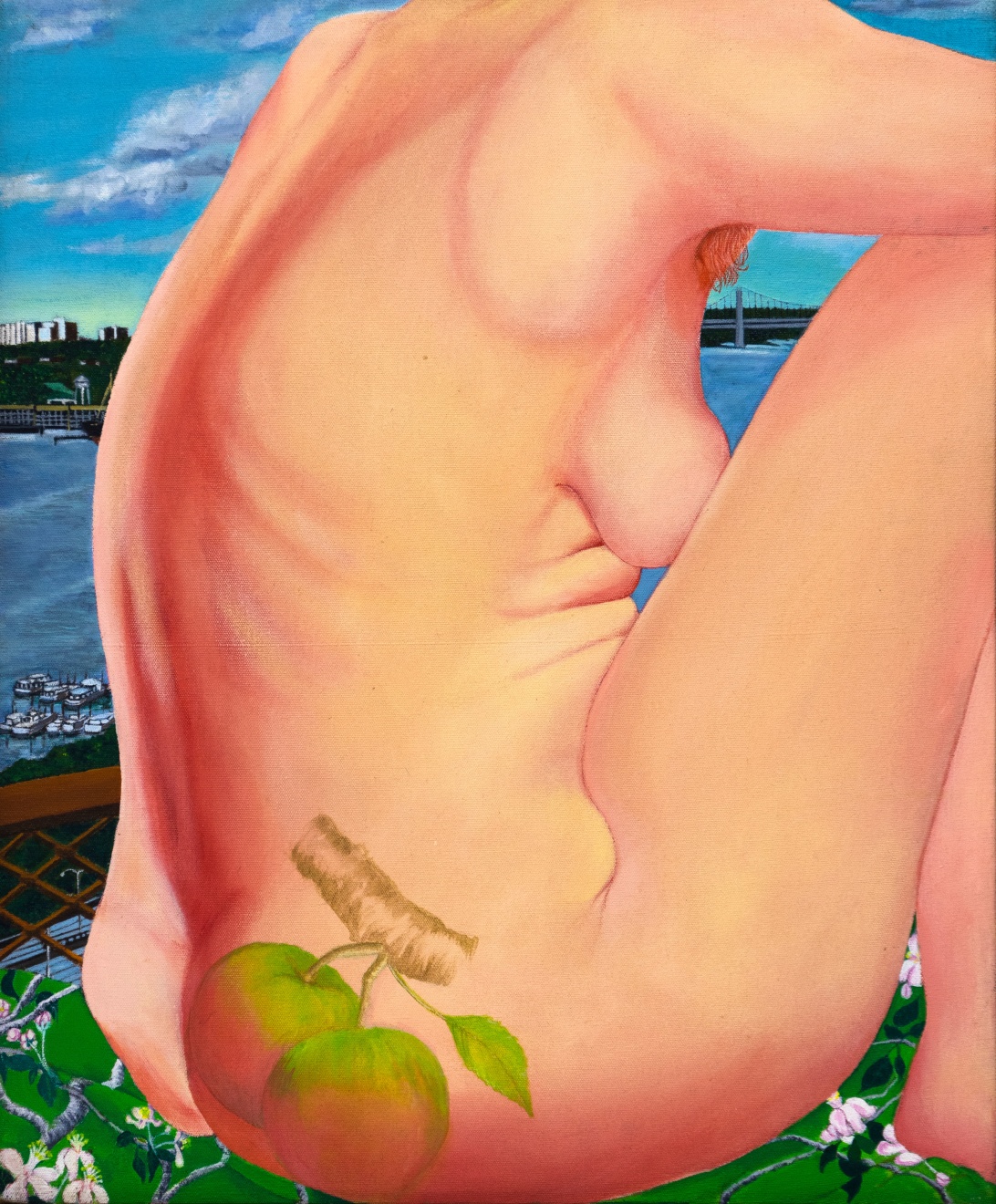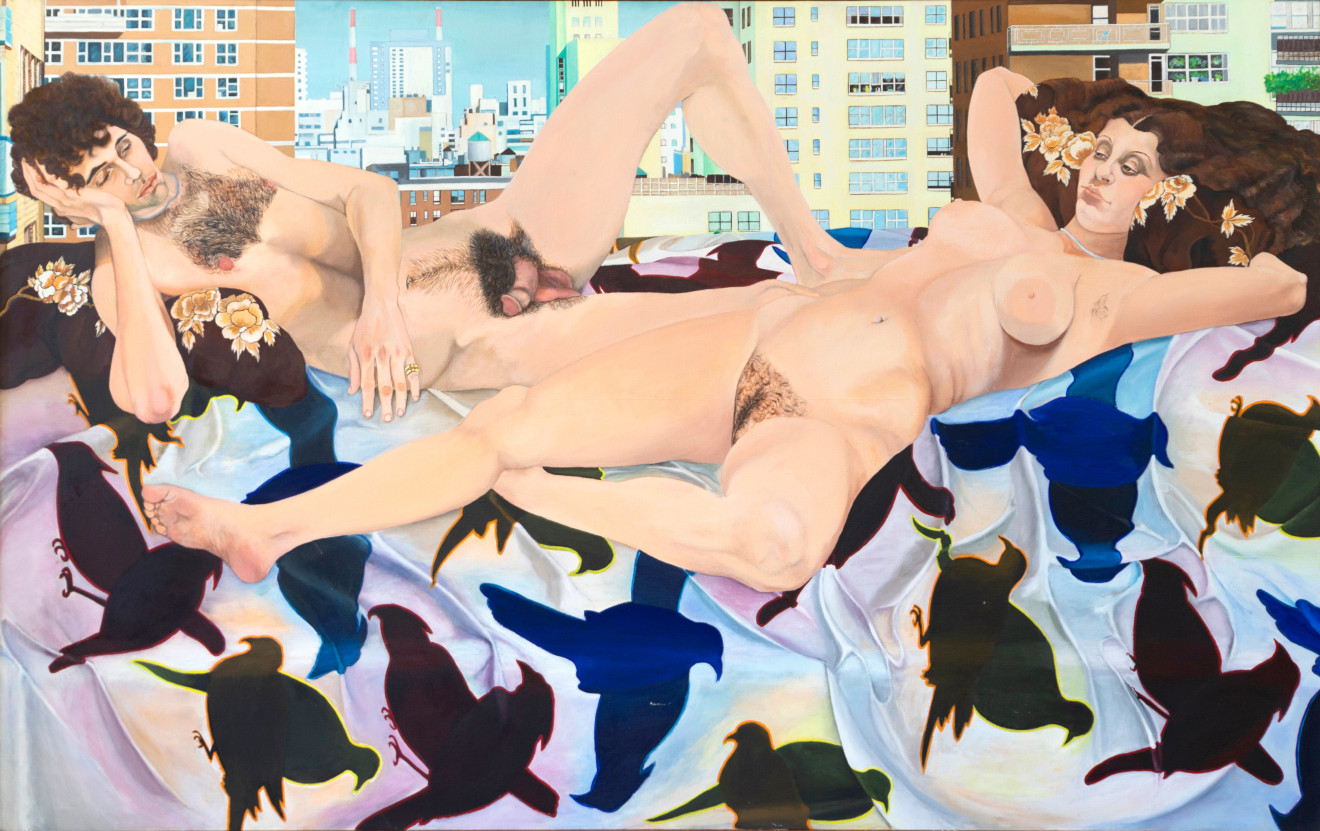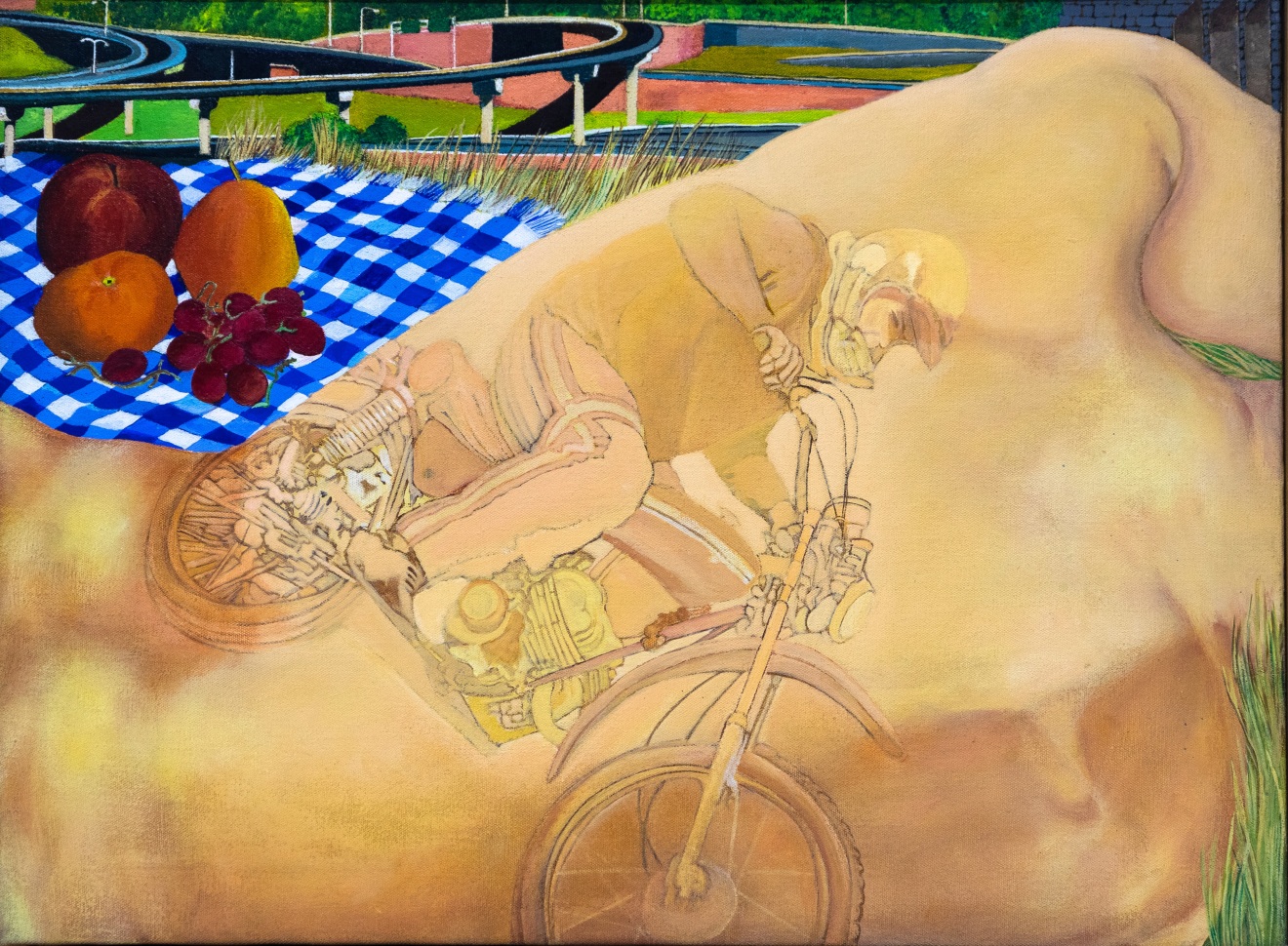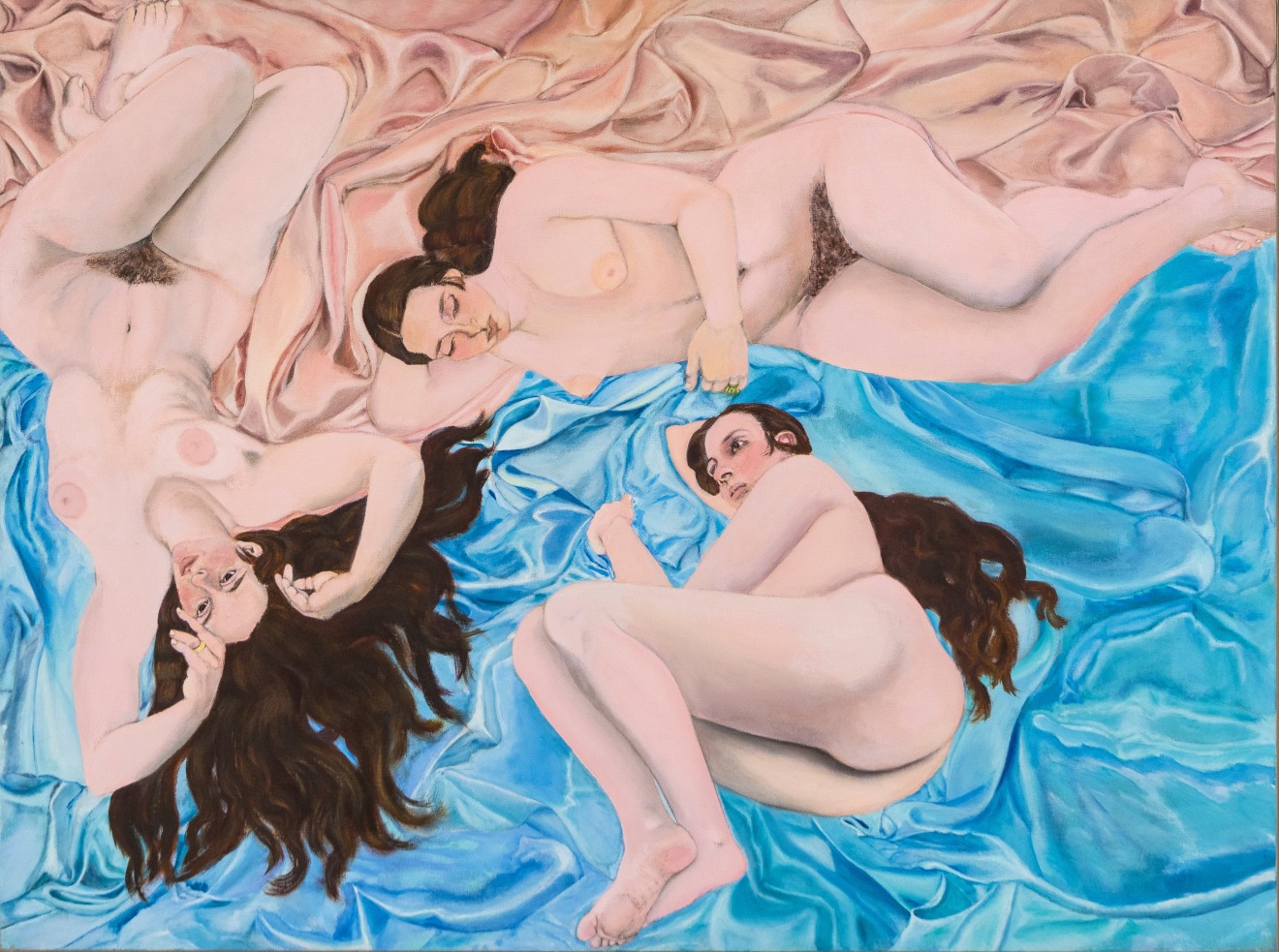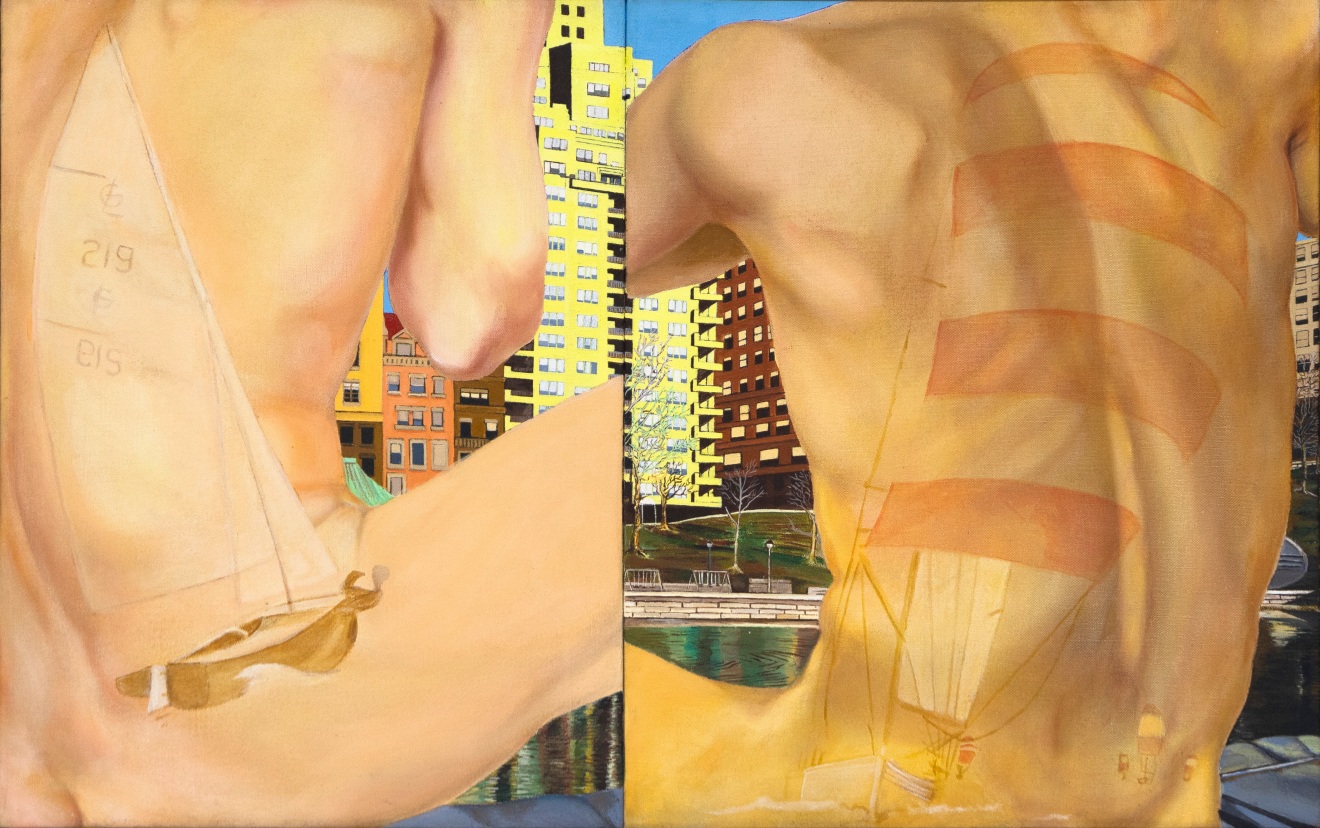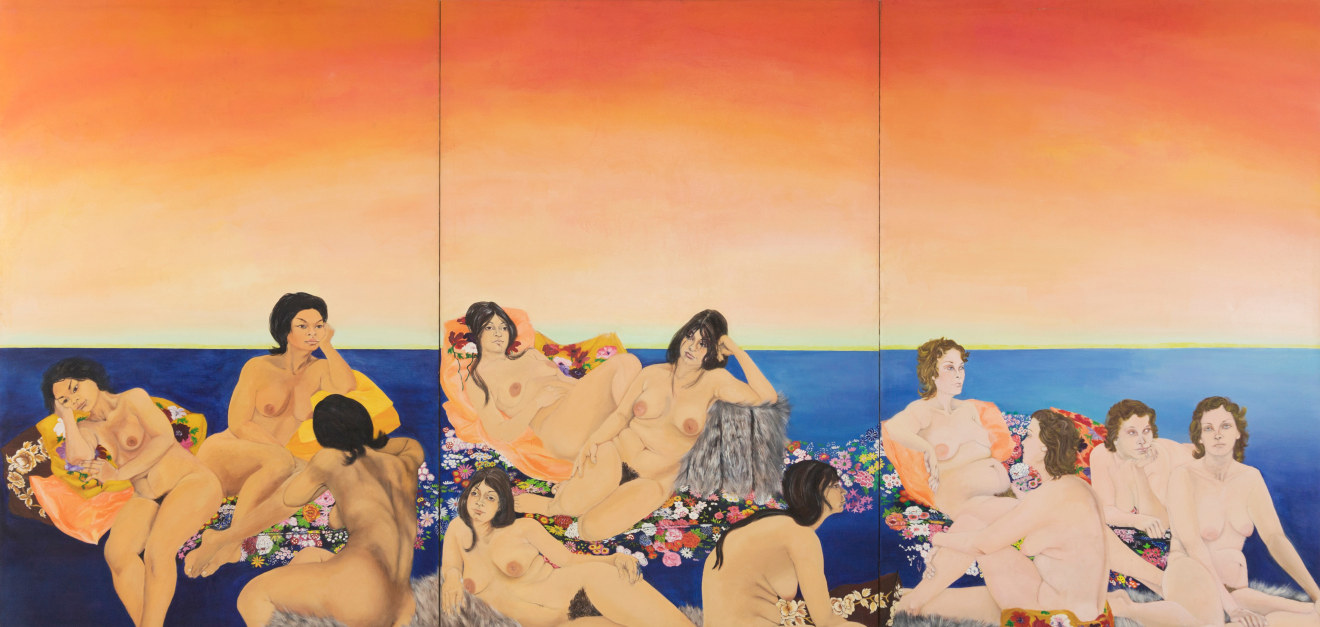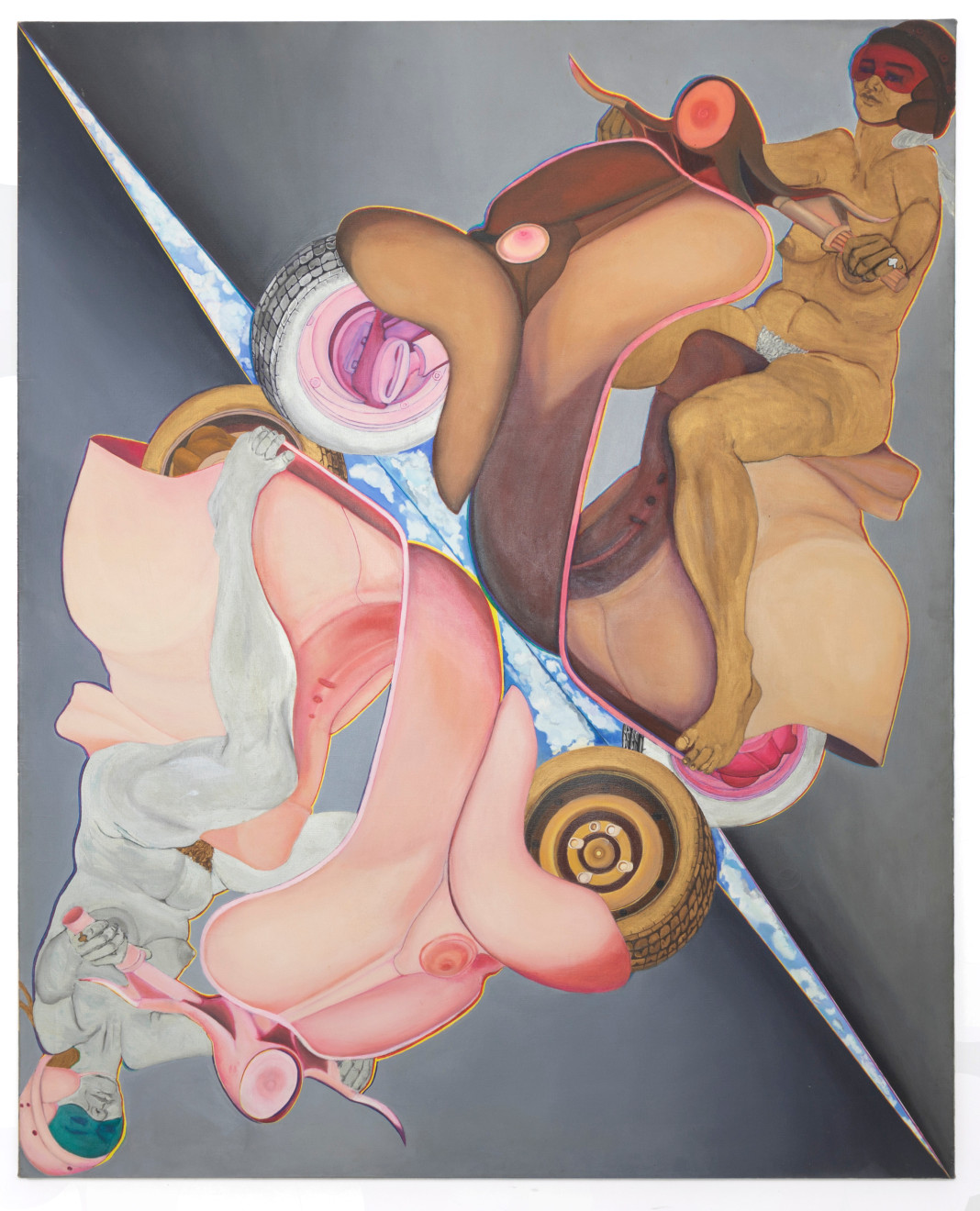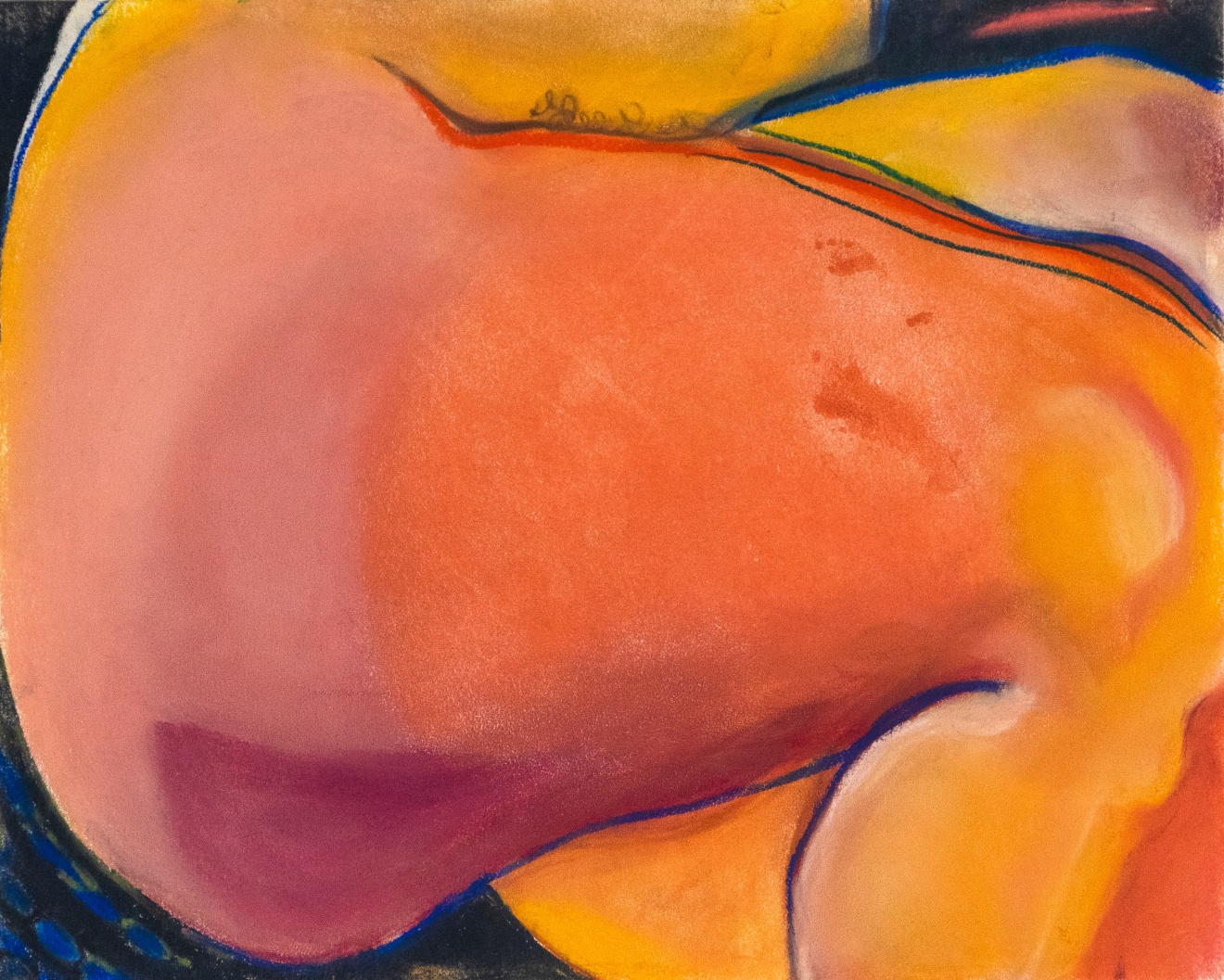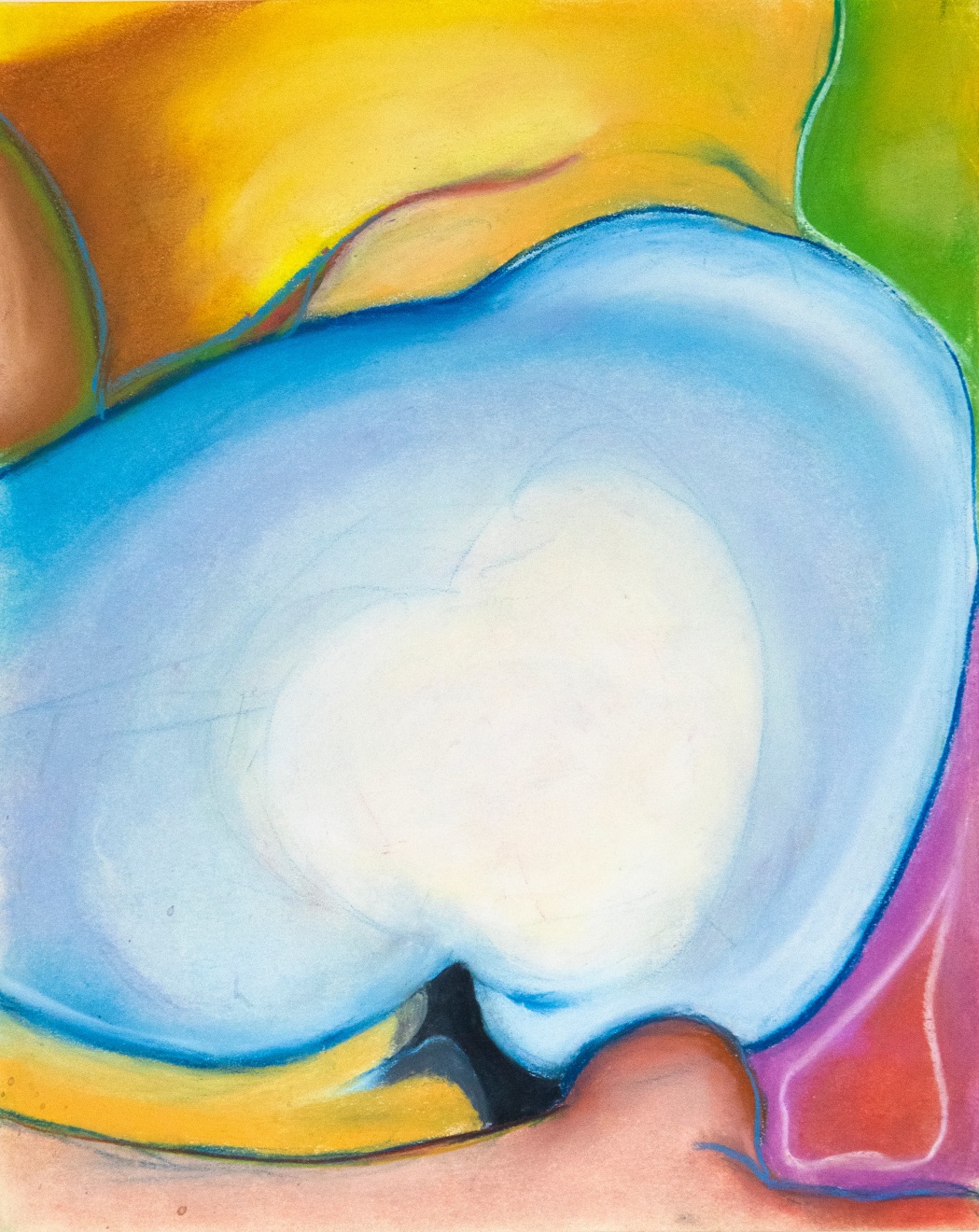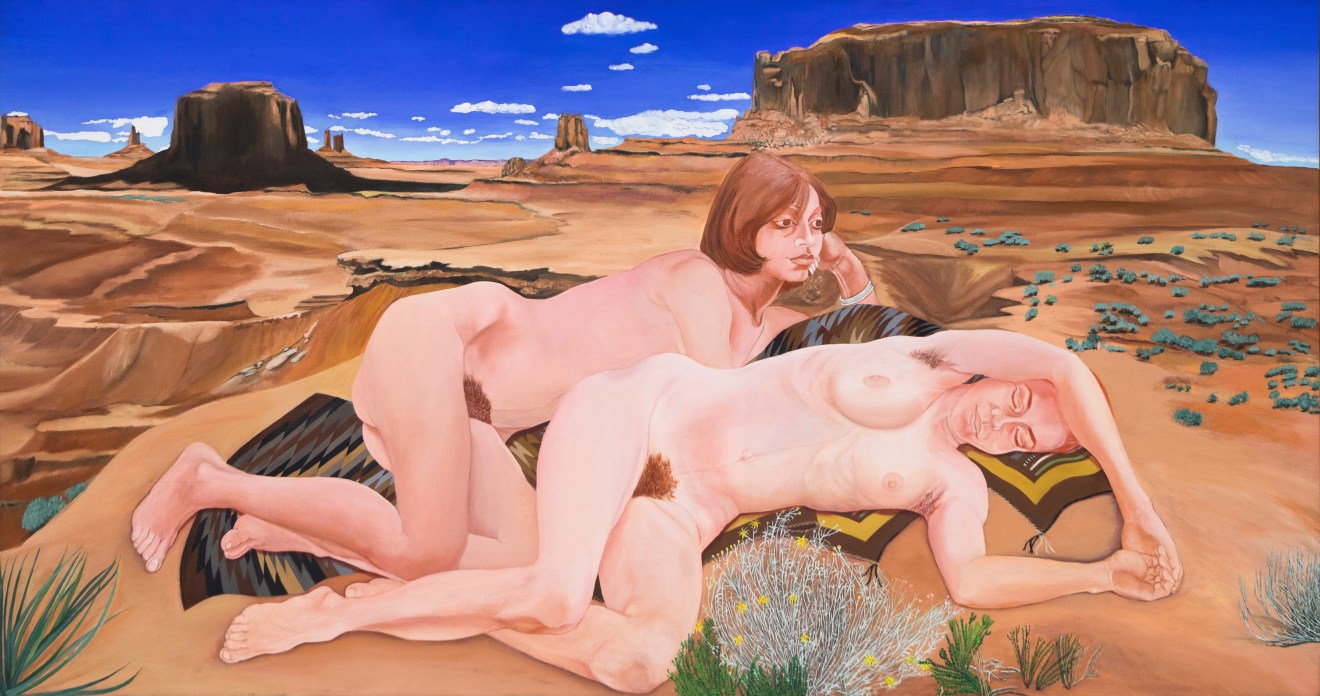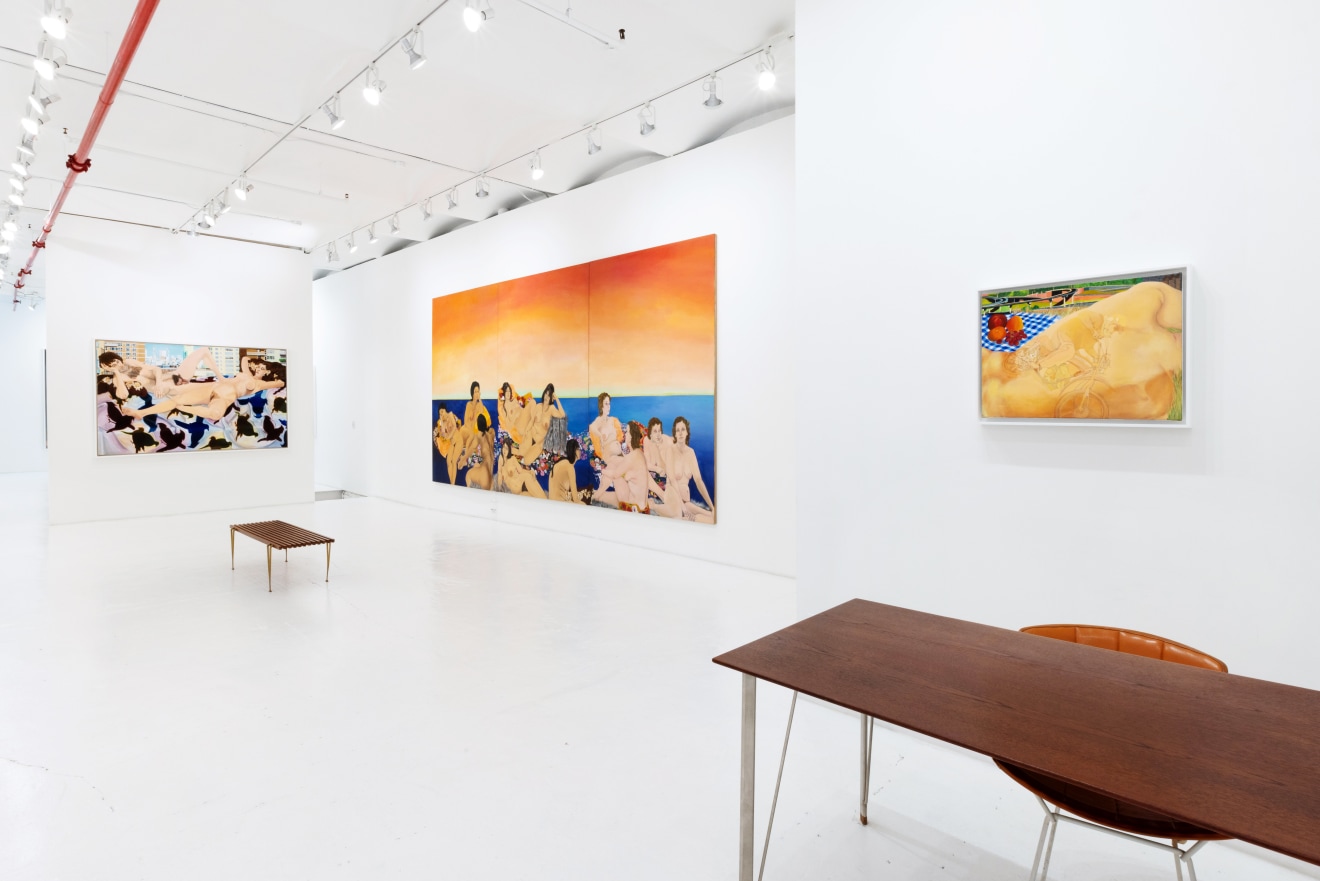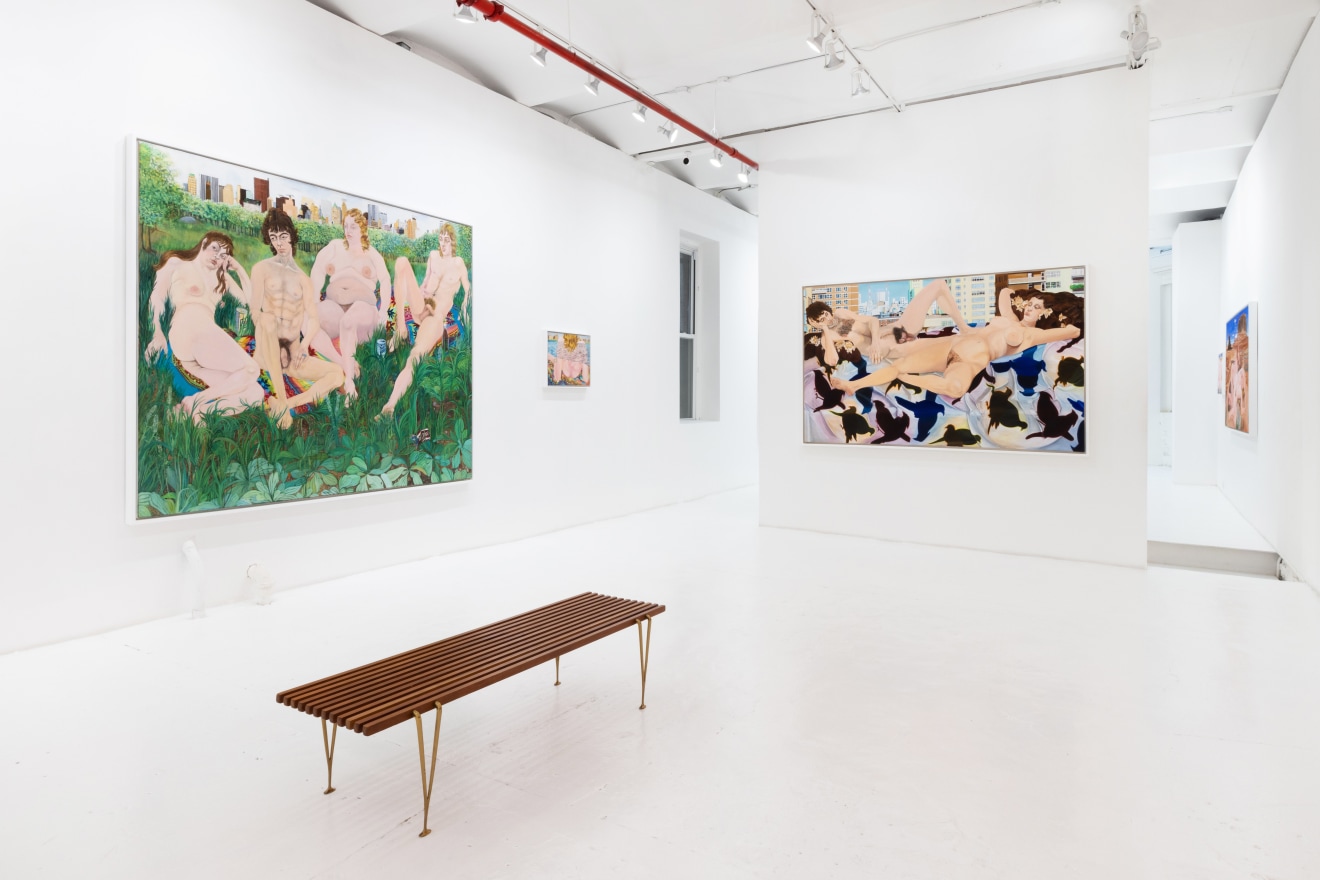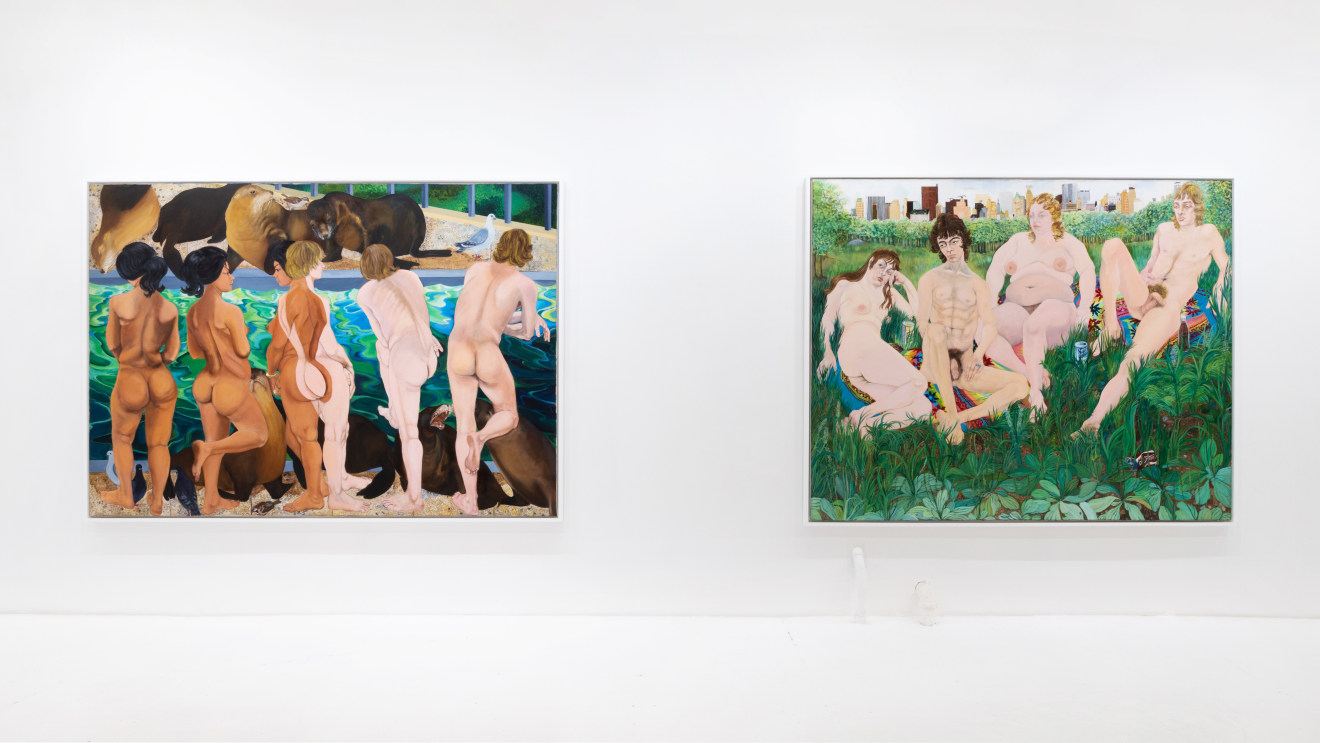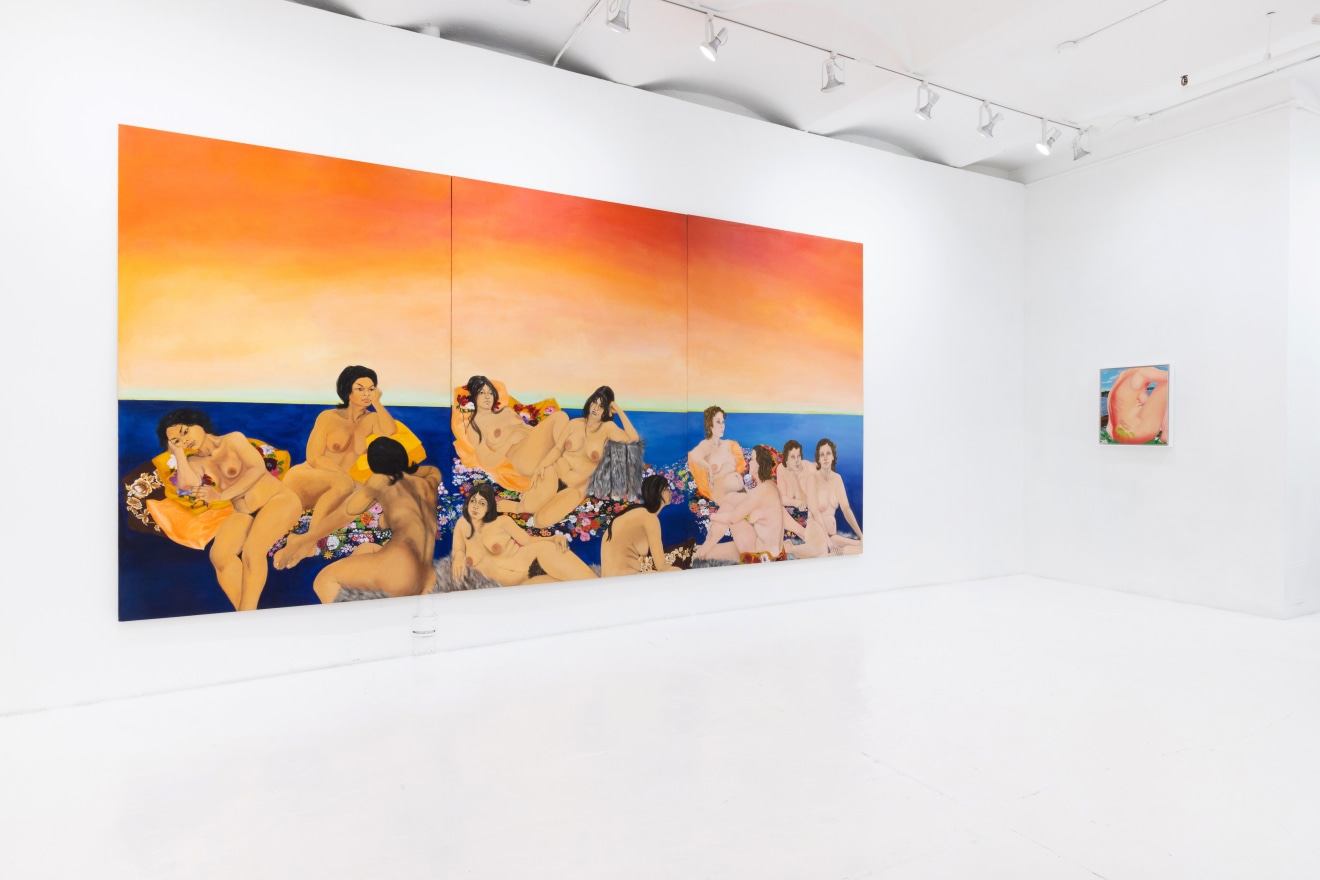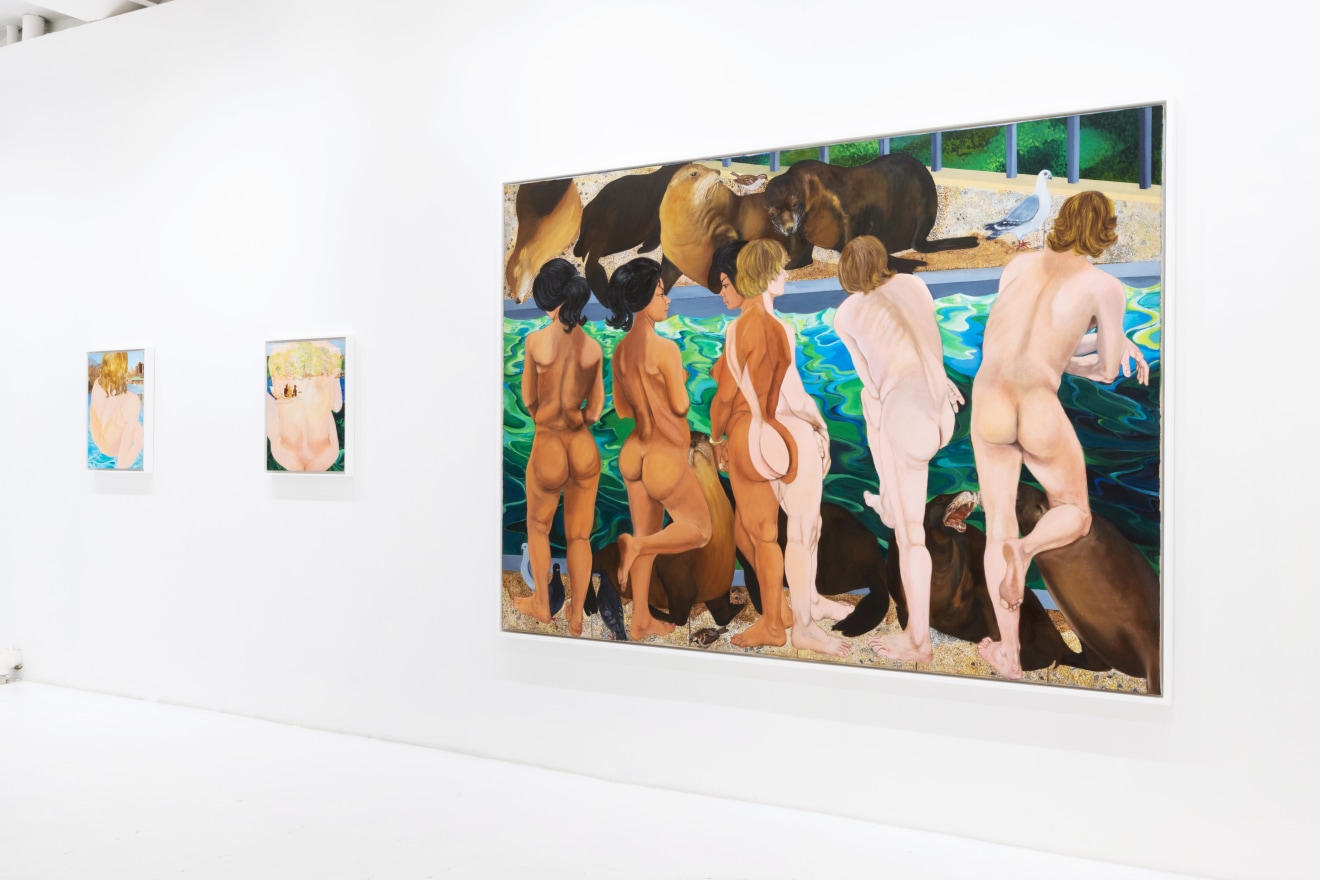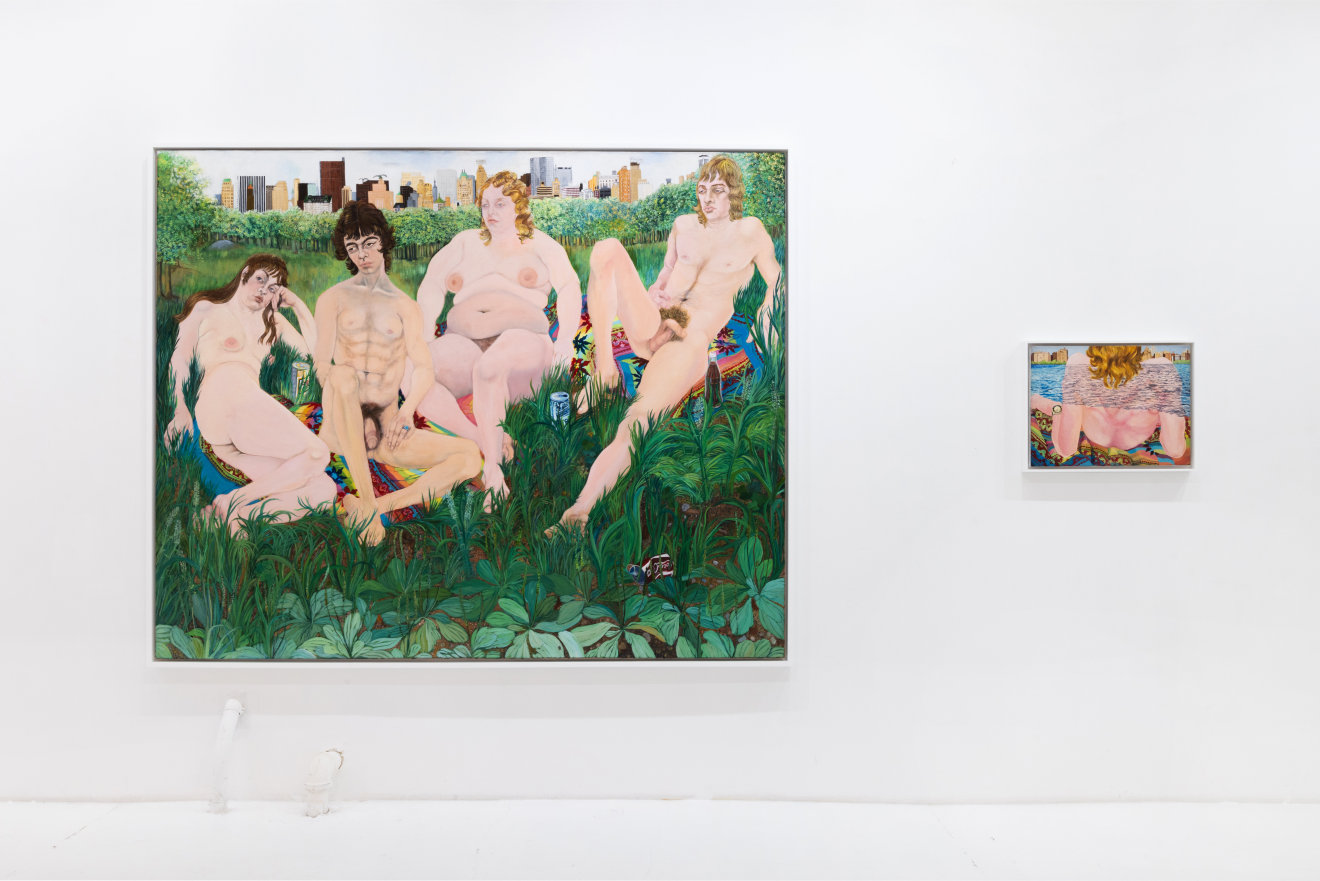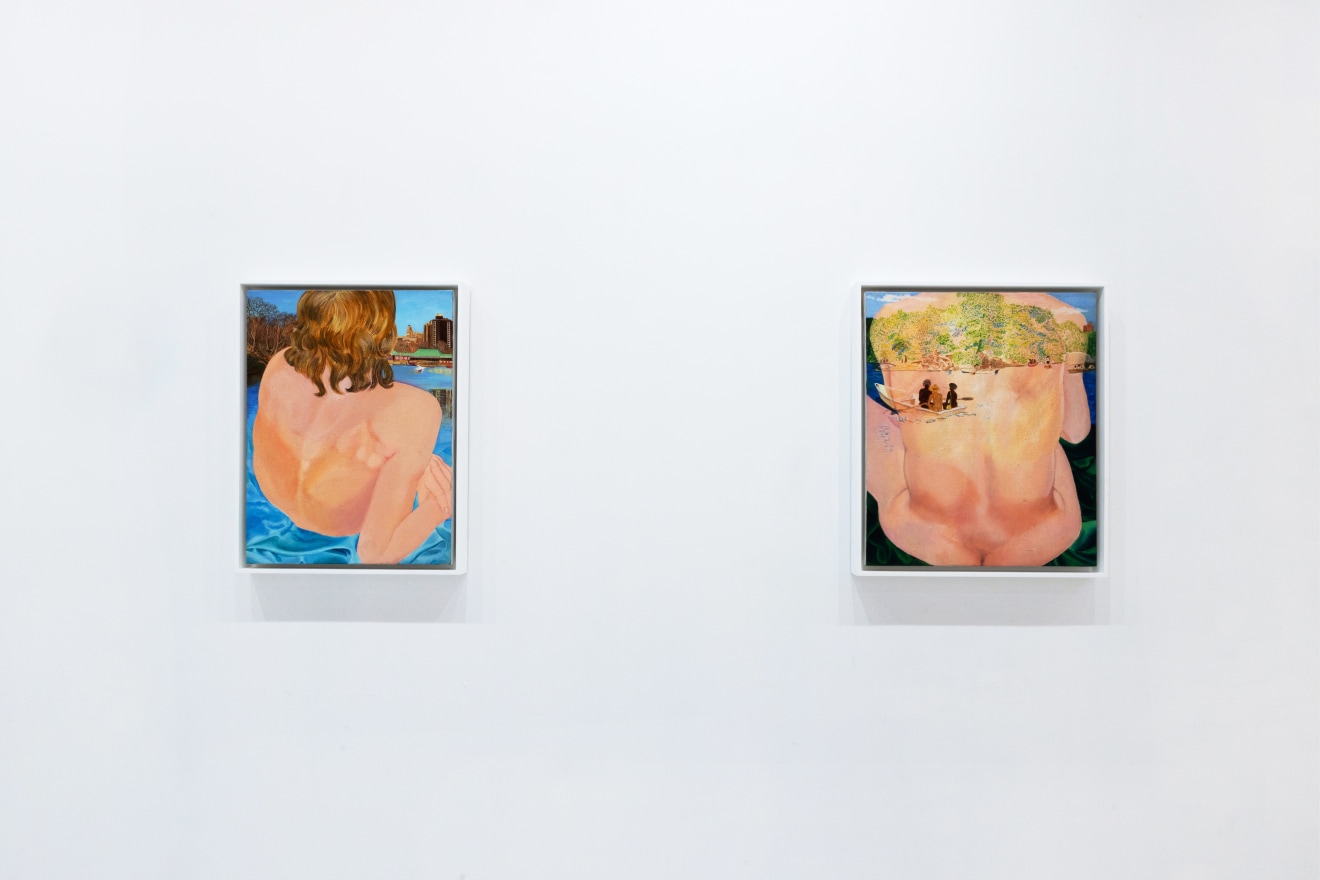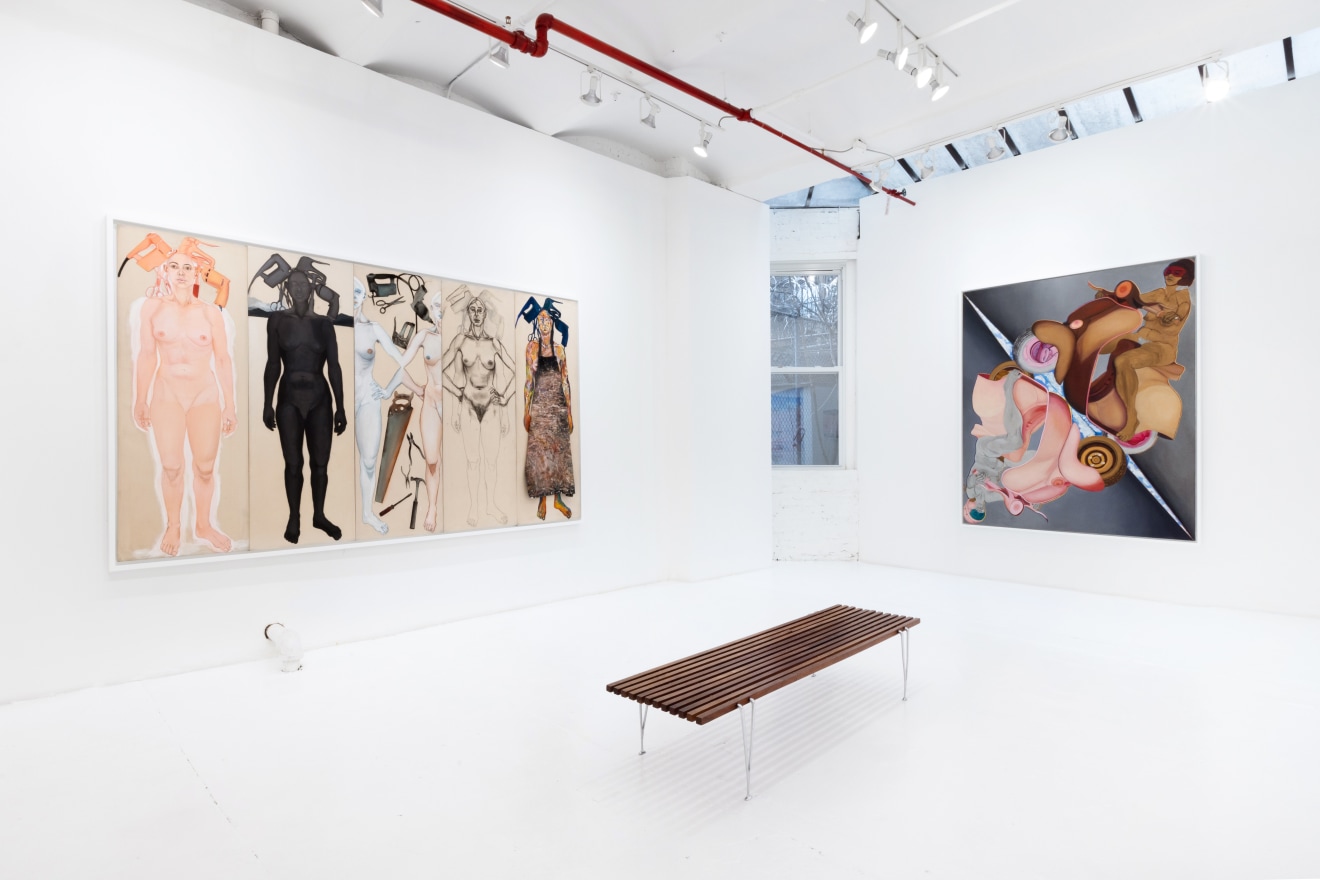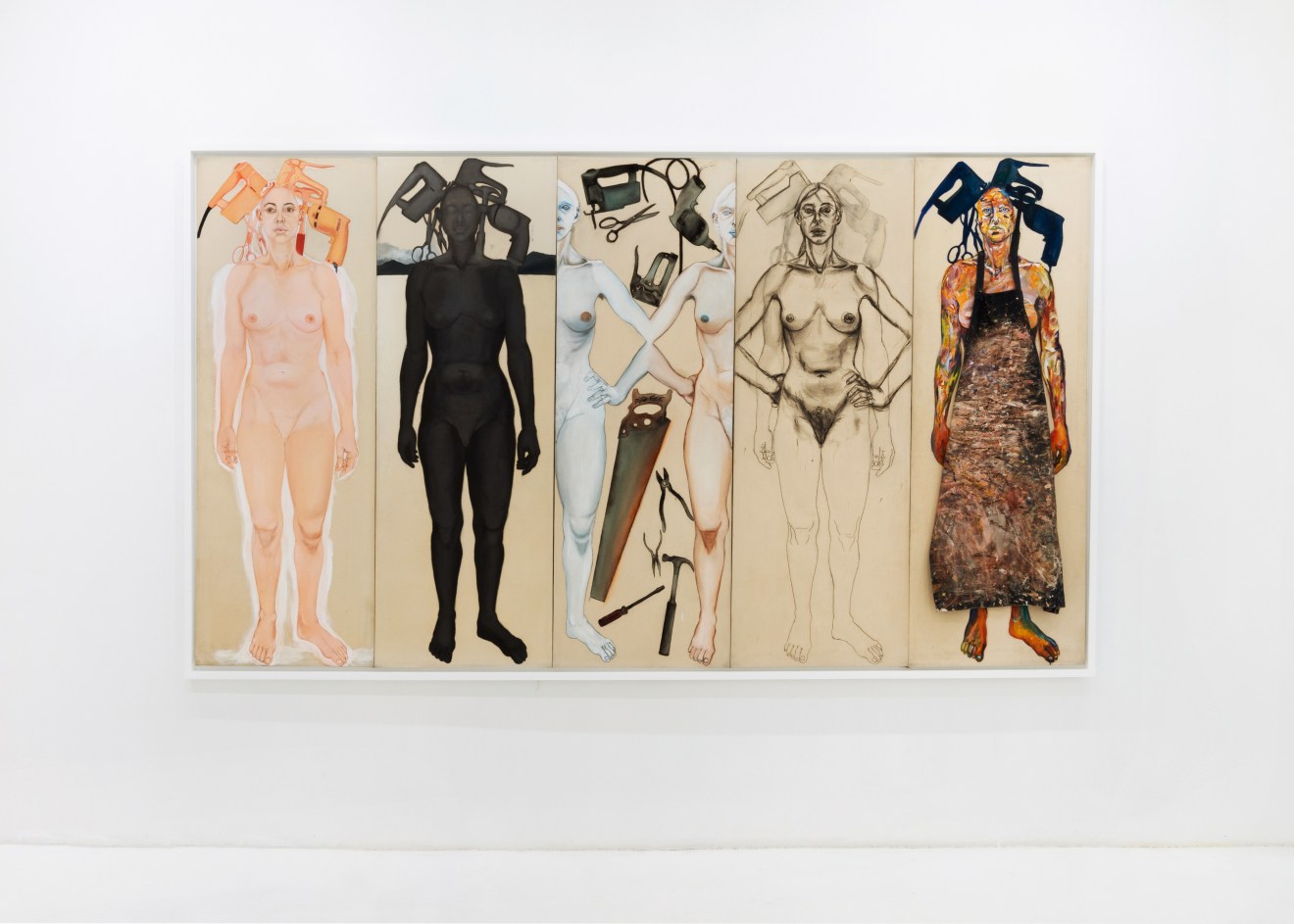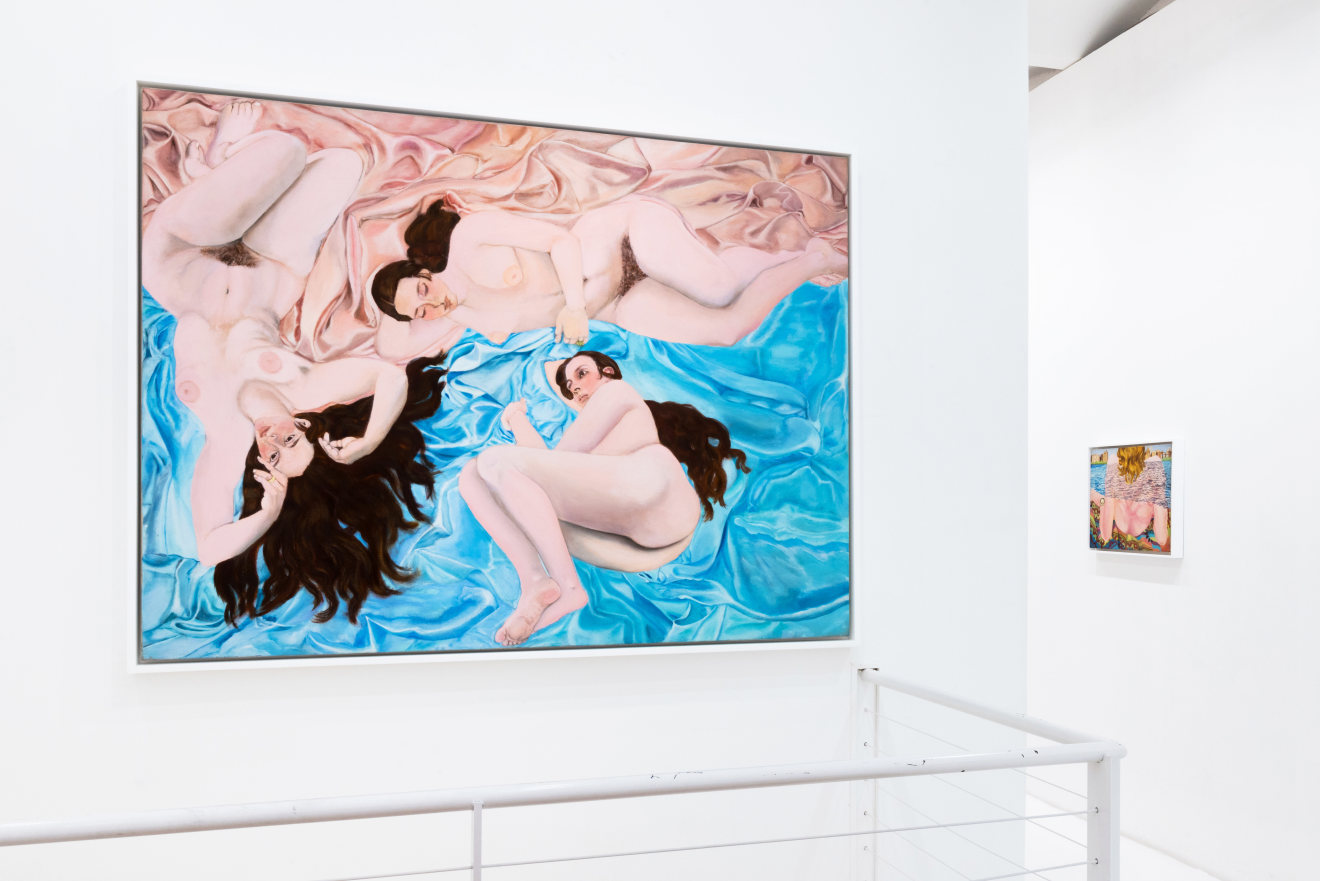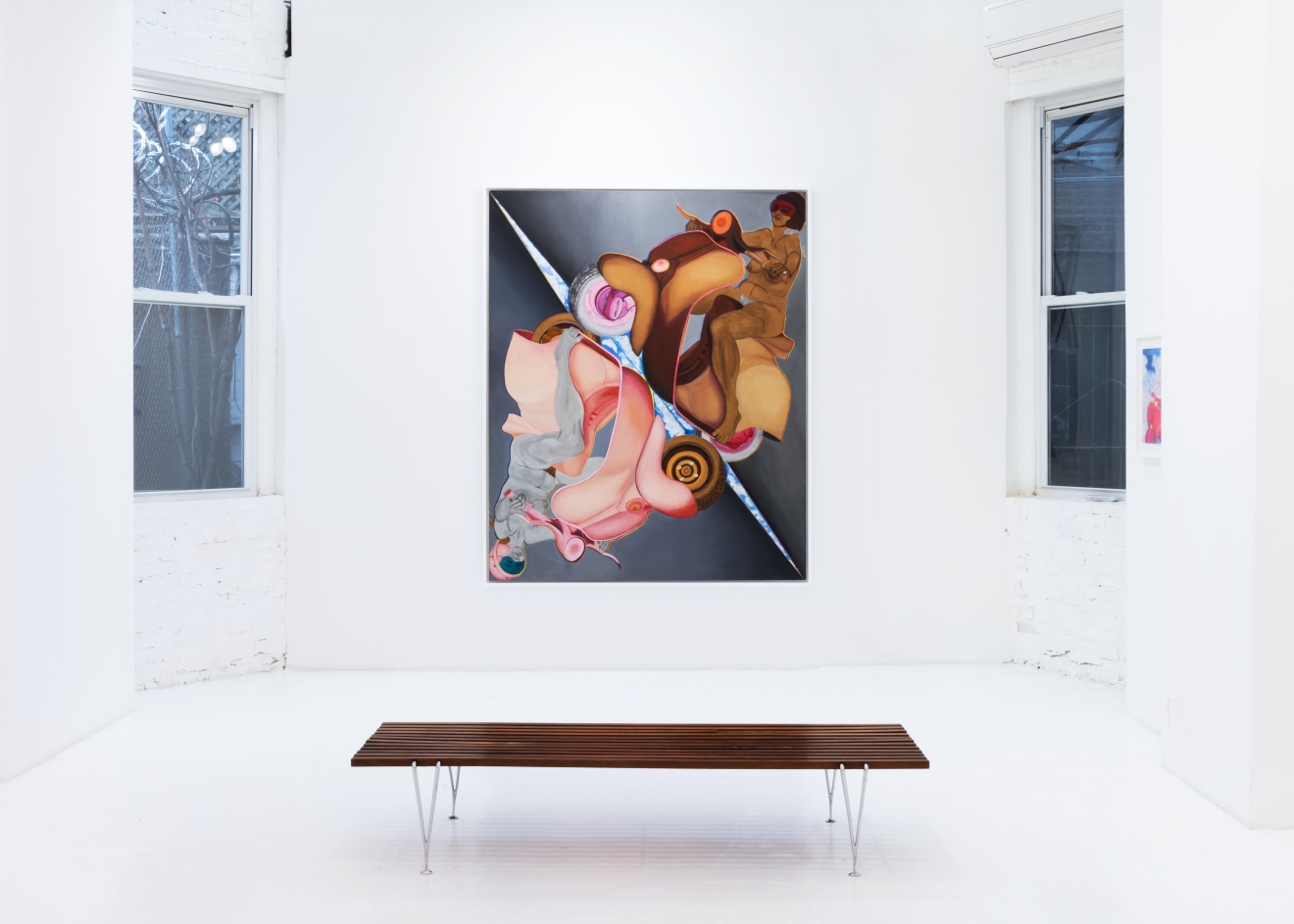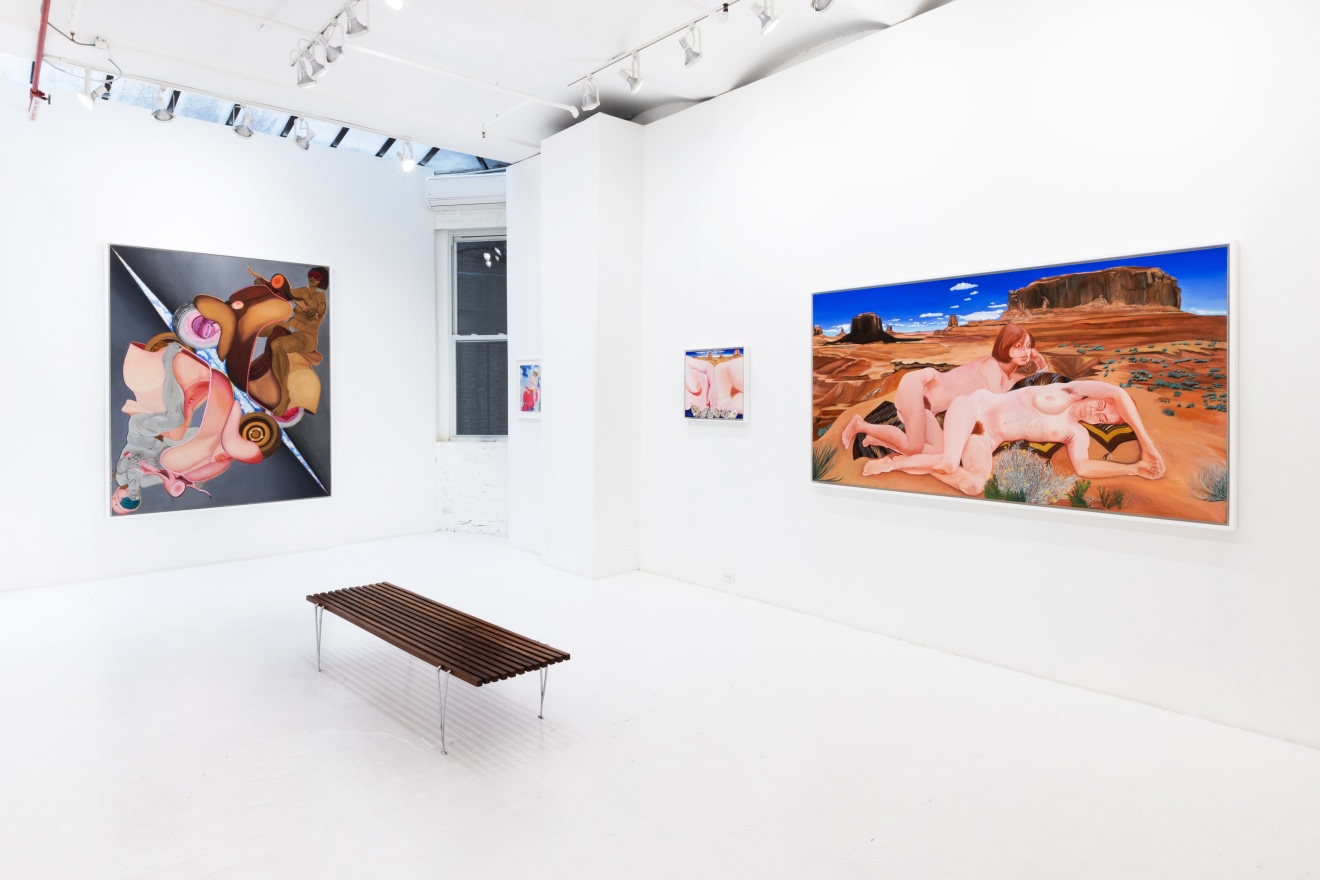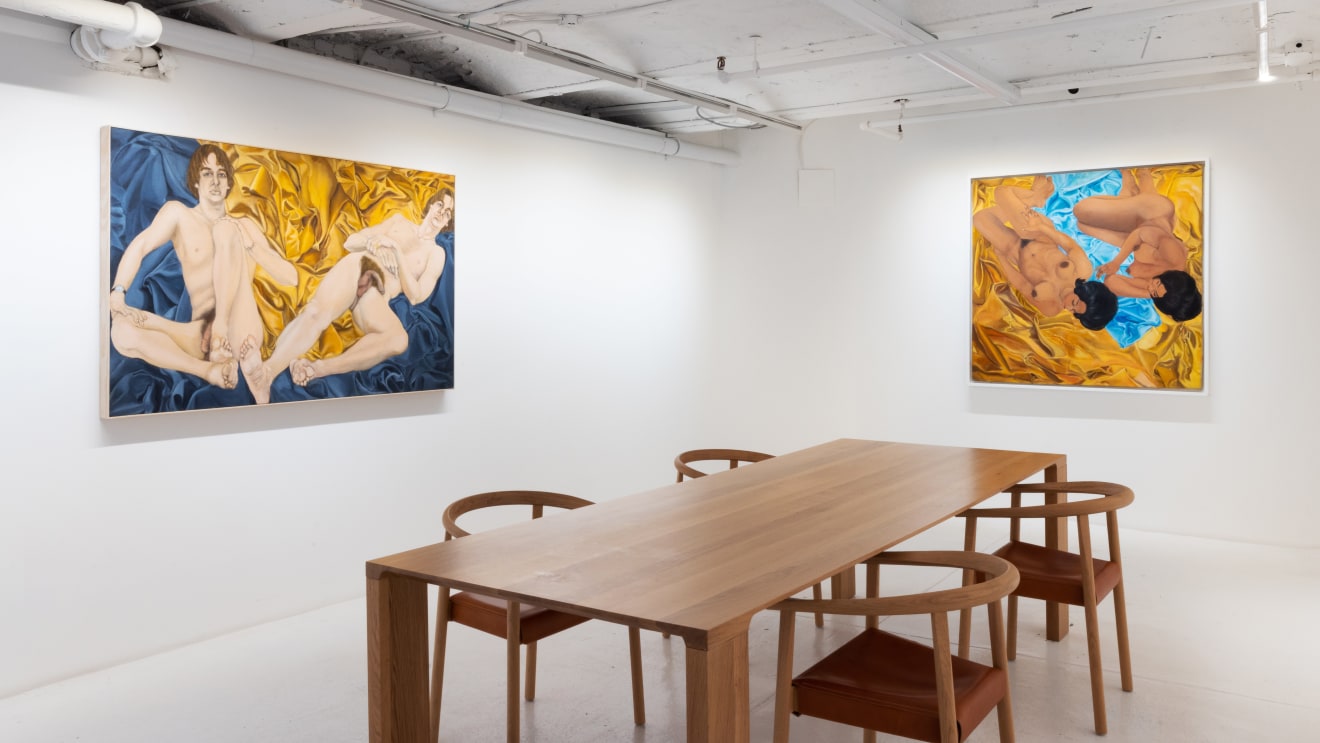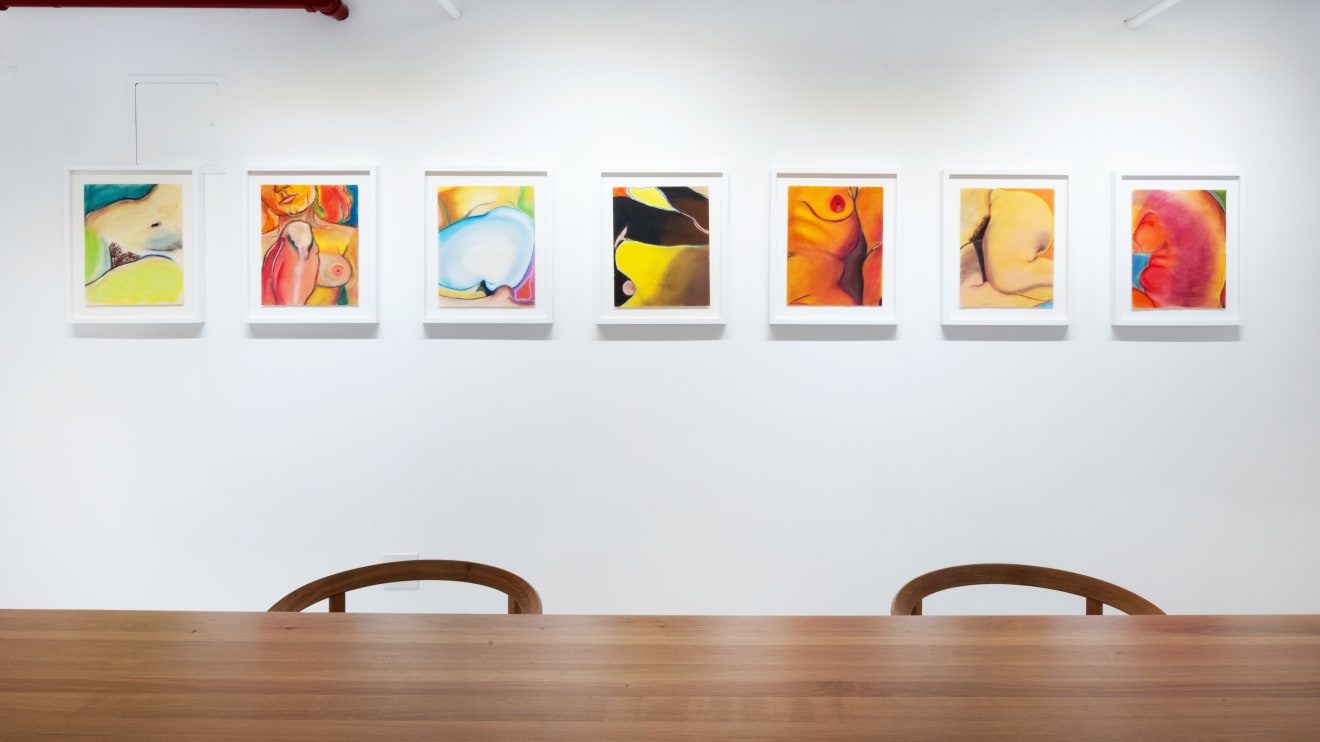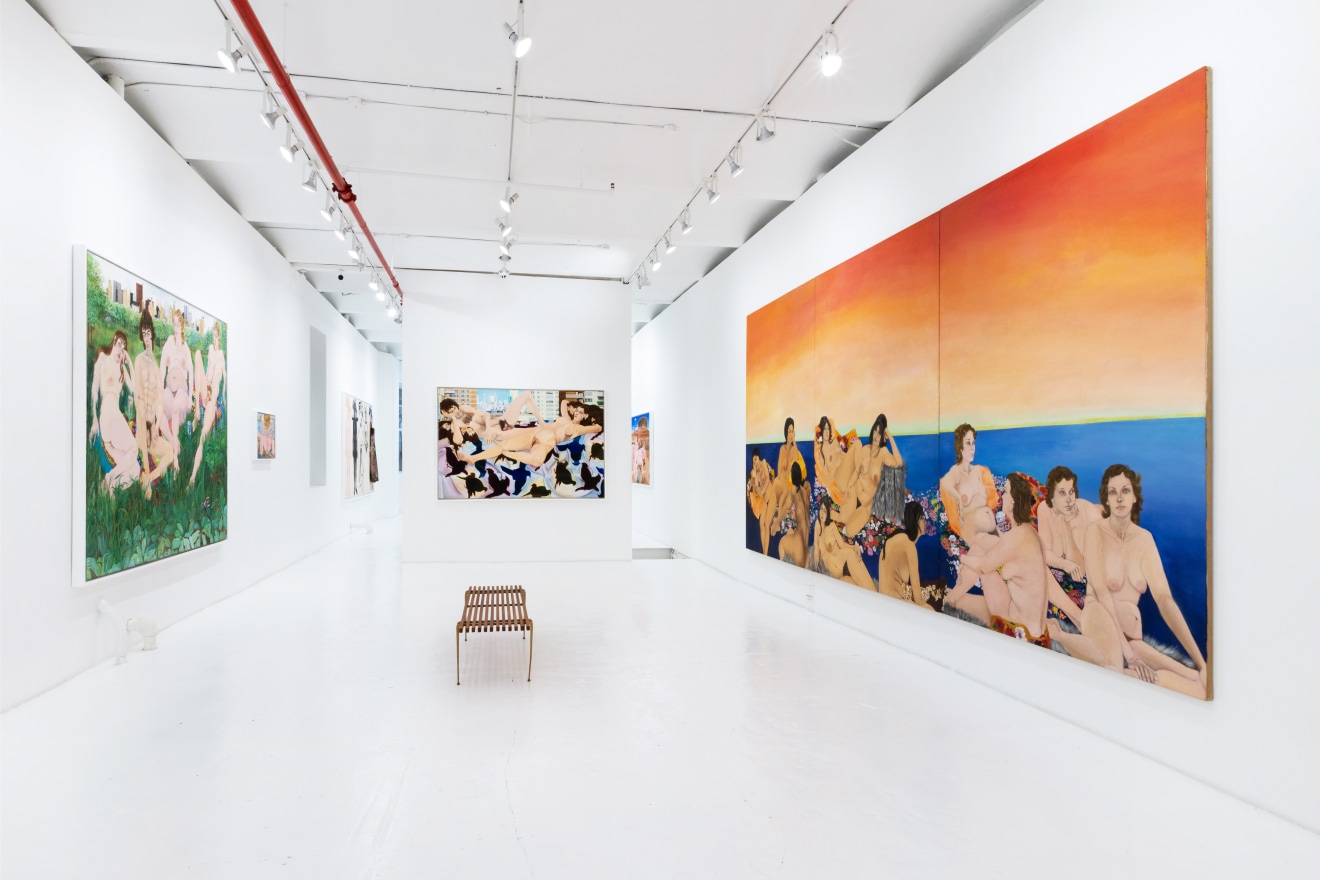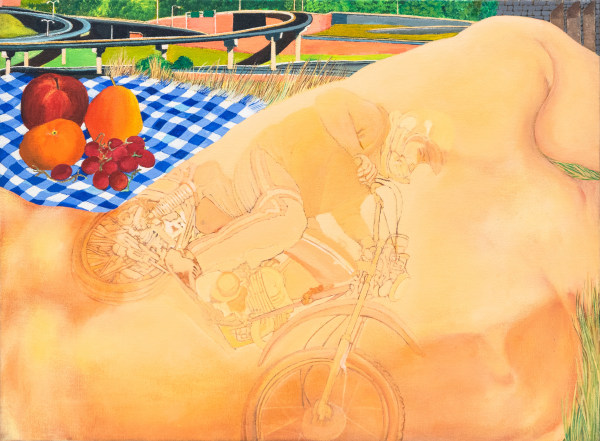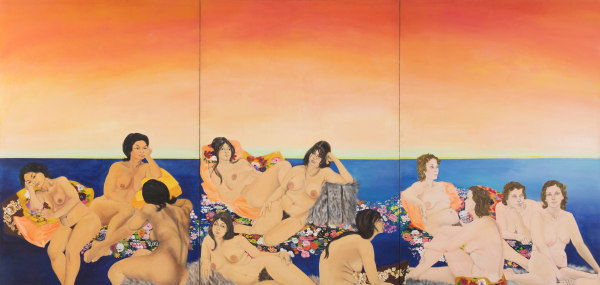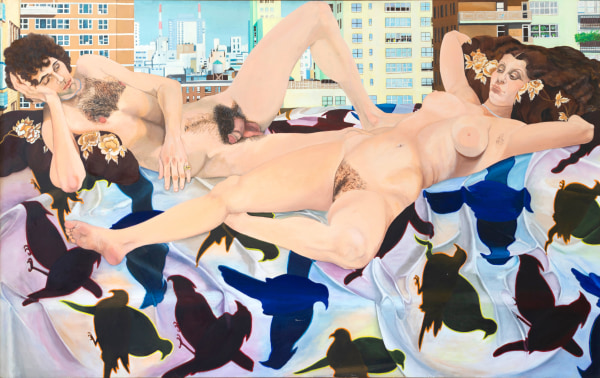
Martha Edelheit: Naked City, Paintings from 1965–80
Eric Firestone Gallery
40 Great Jones | New York, NY
January 25 – March 18, 2023
Opening Reception: Wednesday, January 25 | 6:00 – 8:00 PM
Eric Firestone Gallery is pleased to announce Martha Edelheit: Naked City, Paintings from 1965–80. Opening on January 25, 2023, this is the gallery’s second solo exhibition with the 91-year-old artist. The show will include historic monumental paintings of nude women and men situated on luscious drapery or montaged into familiar locations around New York City; surrealist multi-panel self-portraits; close-ups of torsos with imagined tattoos; and intimate pastels of the body. Edelheit’s practice is transgressive, whimsical, and sensuous all at once. The artist’s output from the mid-1960s through early ‘80s reflects her abiding love of art history and her reimagining of the discipline that was largely created by men, for men.
Over the last several years, Edelheit’s oeuvre has been increasingly recognized by museums across the world. Her works have been featured in recent exhibitions such as New York: 1962–1964 (2022–23) at the Jewish Museum, New York, NY and the forthcoming Action, Gesture, Paint (2023) at Whitechapel Gallery, London. Institutions including the Minneapolis Institute of Art, MN and Moderna Museet, Stockholm have acquired significant paintings by the artist.
Edelheit was born in New York City in 1931, where she lived until moving to Sweden in 1993. She currently divides her time between the Stockholm area and New York City. Edelheit studied at the University of Chicago and Columbia University in the 1950s with artist Michael Loew and art historian Meyer Schapiro. She credits Loew and Schapiro with inspiring a new way of thinking about image construction and pictorial space. Yet as a painter, Edelheit was largely self-taught.
The title of Eric Firestone Gallery’s show recalls the milieu in which Edelheit emerged as an artist—bringing to mind, for instance, legendary photographer Weegee’s first book Naked City (1945) that documents the frenzy and spectacle of life in New York City as well as the classical film noir The Naked City (1948) that captures the violence and mystery of urban experience. Indeed, in the late 1950s, Edelheit established herself at the center of the downtown avant-garde. She became a member of the Reuben Gallery, a Tenth Street artist-run space where her first solo show was held in 1960. Along with fellow members Jim Dine, Rosalyn Drexler, Allan Kaprow, Claes Oldenburg, Lucas Samaras, and Robert Whitman, Edelheit was expanding the definitions of art-making by creating experimental objects. Her second solo presentation in 1961 was held at another significant nucleus of experimental art: Judson Gallery.
Edelheit’s earliest work was abstract. Yet by 1962, the painter had begun incorporating tattooing into her art practice. Edelheit related to the writings of Claude Lévi-Strauss. In his 1955 book, Tristes Tropiques, Lévi-Strauss speculates that tattooing was the first art, before cave art, and that the human body was the first canvas. In Edelheit’s hands, flesh became a place where the dreams and fantasies of her figures emerge. In the 1960s, Edelheit began working from the nude model—a watershed that would transform her practice.
Edelheit has always prioritized an empathic relationship with her subjects. Her paintings evoke the friendships that developed between painter and model—an intimate exchange during which the sitter would often share private thoughts and experiences. Invented tattoos inscribed on backs and torsos within Edelheit’s more intimately scaled paintings became a kind of journal for recording these exchanges. The fabrics on which figures recline are replete with symbols and patterns that represent life events. After getting to know her models, Edelheit often painted directly on textiles before using them as props within her rendered tableaus.
Edelheit reconceived the traditional point of view and male gaze in Western and Non-Western art as well as pornography by portraying male nudes and non-idealized female bodies. The artist ruminated on her travels across Europe, realizing that Renaissance masterpieces were about men and produced for a male audience. She began, in her own work, to position nude or partially dressed women in confrontational stances.
In 1974, Edelheit’s work was the subject of a solo exhibition at the Evanston Art Center in Illinois. On view were large-scale canvases that will be presented at Eric Firestone Gallery such as View of Empire State Building from Sheep Meadow (1970–72) and Seals, Central Park Zoo (1970–71). The Evanston Art Center show caused an uproar, with viewers calling for Edelheit’s paintings—especially those depicting male nudity—to be taken down. In response, letters of defense addressed to the Evanston Art Center were penned by esteemed scholars and artists such as Marcia Tucker; Linda Nochlin; Allan Kaprow; Lawrence Campbell; and Irving Sandler. This was not the first nor last time that Edelheit’s work (and even the artist herself) would be deemed obscene, despite the fact that she came of age as a woman and an artist against the backdrop of the sexual revolution.
In addition to such paintings, on view at Eric Firestone Gallery will be a group of related pastels in which Edelheit abstracts and defamiliarizes the body, with extreme close-ups of the torso: stomachs, breasts, and thighs. Her palette of reds, oranges, and pinks is warm and luminous; these pastels hum with erotic energy.
Edelheit’s output at large implicitly challenges societal expectations of women. By using quotidian materials and responding to Non-Western erotica, she also challenged formalist paradigms and traditional nude figuration. She pushed forms and issues to the surface (literally and figuratively) that our culture preferred to ignore. Edelheit was a pioneer of the era, and the conversation that her practice raises about taboo sexual imagery and the censorship of women artists remains topical today.
Martha Edelheit: Naked City, Paintings from 1965–80 will be accompanied by a fully illustrated catalogue as well as a public program with the artist herself.

